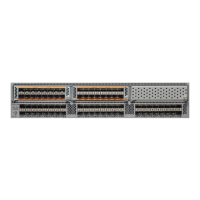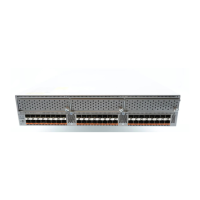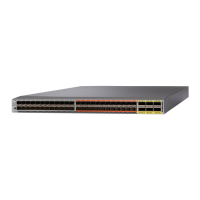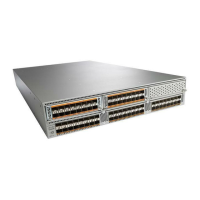Port VSAN Membership
Port VSAN membership on the switch is assigned on a port-by-port basis. By default each port belongs to
the default VSAN. You can assign VSAN membership to ports using one of two methods:
• Statically—Assigning VSANs to ports.
• Dynamically—Assigning VSANs based on the device WWN. This method is referred to as dynamic
port VSAN membership (DPVM).Cisco Nexus devices do not support DPVM.
VSAN trunking ports have an associated list of VSANs that are part of an allowed list.
Related Topics
Assigning Static Port VSAN Membership, on page 122
Configuring VSAN Trunking, on page 85
Assigning Static Port VSAN Membership
You can statically assign VSAN membership for an interface port.
SUMMARY STEPS
1.
configure terminal
2.
vsan database
3.
vsan vsan-id
4.
switch(config-vsan-db)# vsan vsan-id interface {fc slot/port | vfc vfc-id}
5.
switch(config-vsan-db)# vsan vsan-id {fc slot/port | vfc vfc-id}
DETAILED STEPS
PurposeCommand or Action
Enters global configuration mode.configure terminal
Example:
switch# configure terminal
switch(config)#
Step 1
Configures the database for a VSAN.vsan database
Example:
switch(config)# vsan database
switch(config-vsan-db)#
Step 2
Creates a VSAN with the specified ID if that VSAN does not
exist already.
vsan vsan-id
Example:
switch(config-vsan-db)# vsan 50
Step 3
Assigns the membership of the specified interface to the VSAN.
switch(config-vsan-db)# vsan vsan-id interface {fc
slot/port | vfc vfc-id}
Step 4
Cisco Nexus 5000 Series NX-OS SAN Switching Configuration Guide, Release 5.2(1)N1(1)
122 OL-27583-01
Configuring and Managing VSANs
Guidelines and Limitations for VSANs

